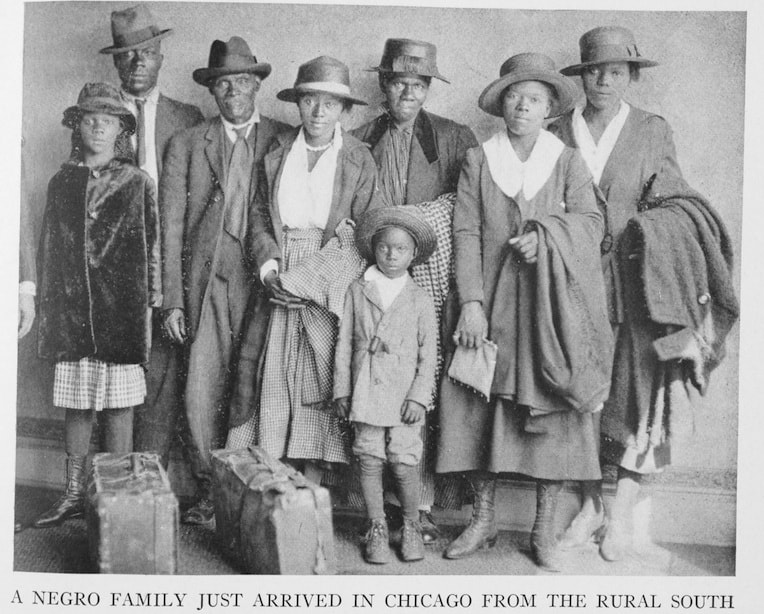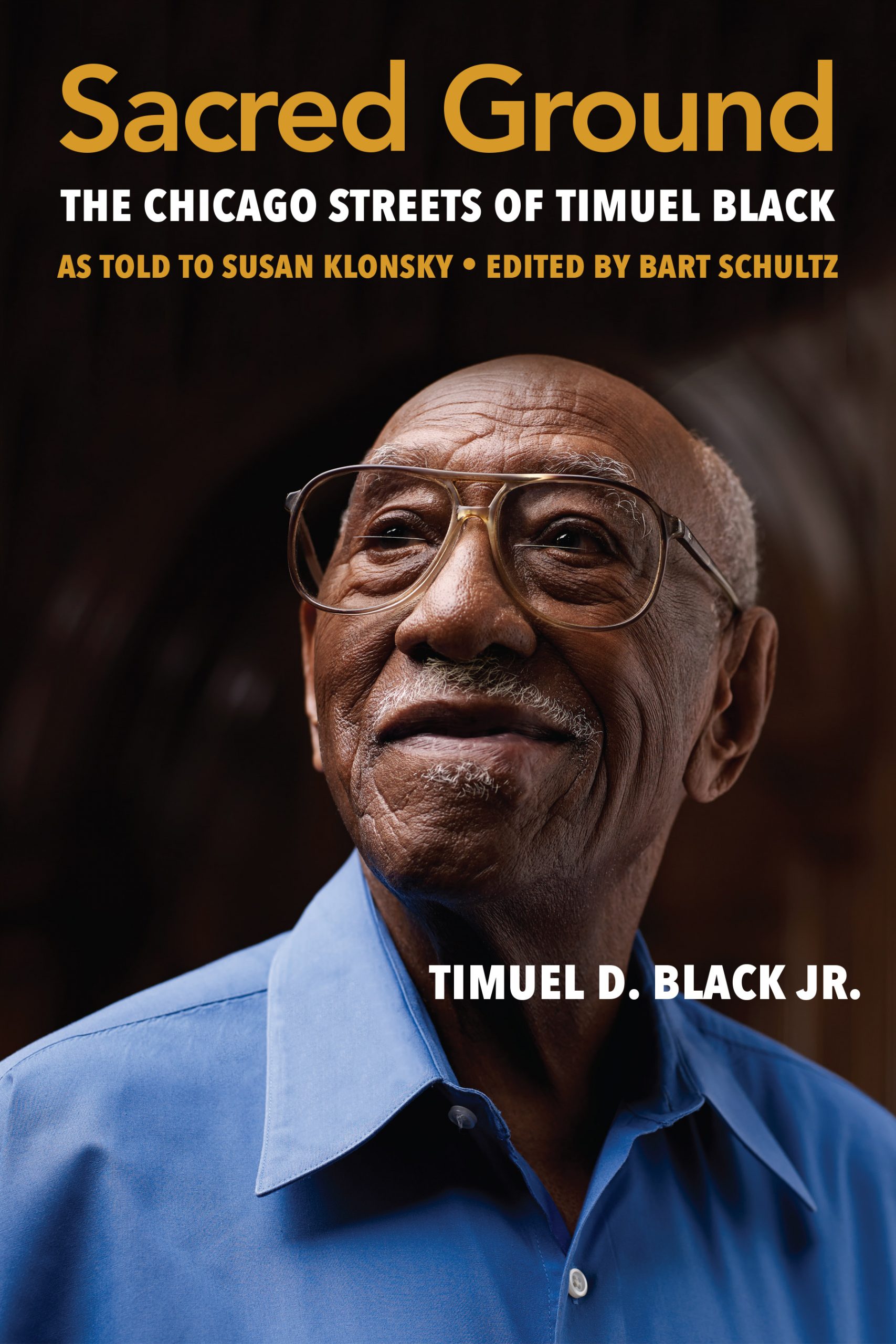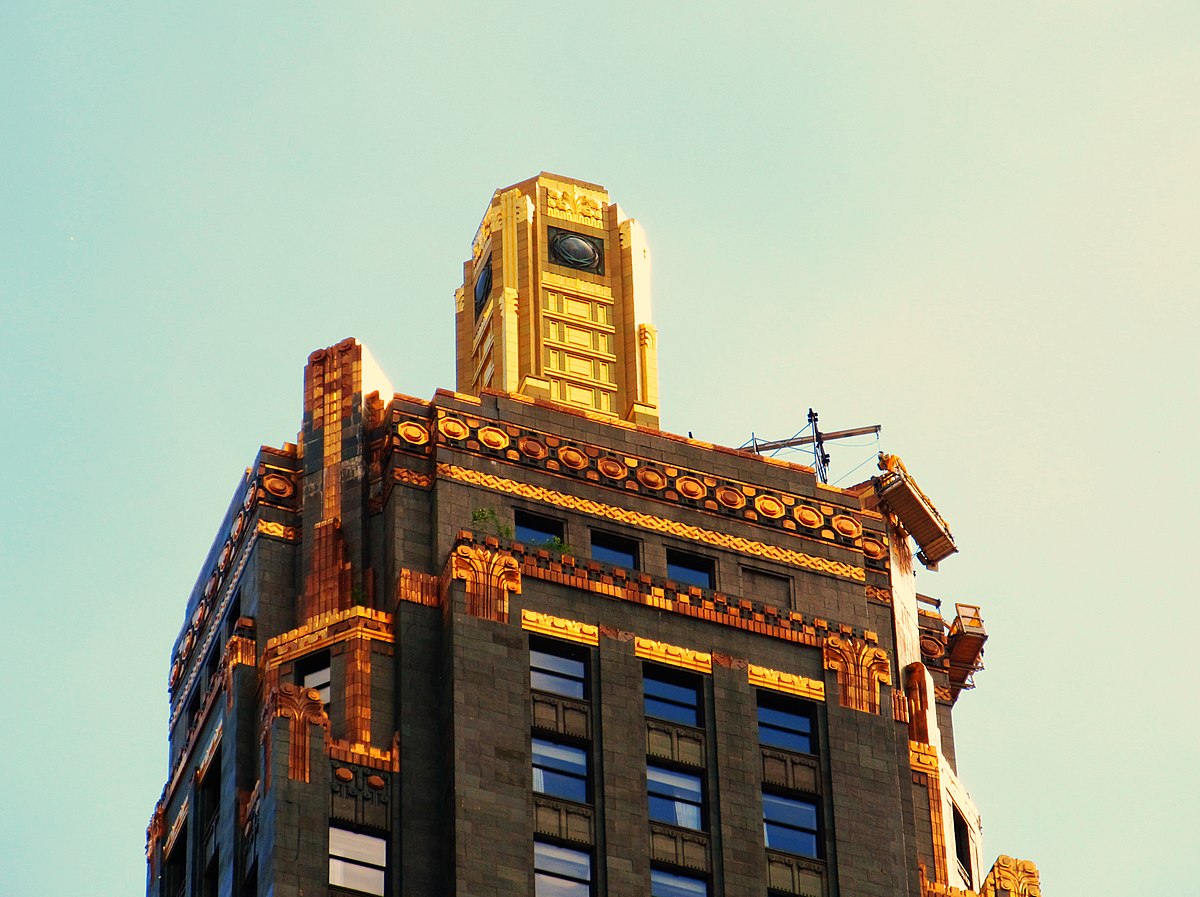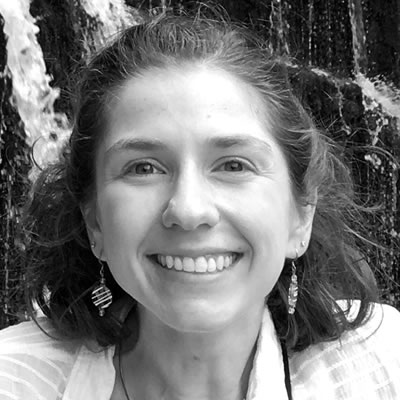The Bronzeville neighborhood has been the heart of Chicago’s African-American community for a century. The Great Migration started in 1916, exactly 100 years ago this year. Eventually millions of African-Americans left the agricultural South for the industrial north. If they came to Chicago at that time, then they almost certainly settled in Bronzeville. As part of Black History Month, I wanted to the early history of the neighborhood.
We research Chicago history and architecture like this while developing our live virtual events and custom corporate events. Join us for our public virtual events or book an exclusive team-building event. We can also create custom tours and original content creation about this Chicago topic.

What’s in the Bronzeville Name?
The Bronzeville neighborhood sprang up around the turn of the 20th Century. There had always been African-American residents of Chicago, but only a relative few until 1870. Though segregation was against the law after the Civil War, most African-Americans still encountered widespread job and housing discrimination. That meant that the nascent community had to settle in a thin strip of land on the South Side.
This area was once the estate of famed Senator Stephen Douglas. In fact, if you look on a map the official community name is still Douglas. When African-Americans began to move in, the neighborhood quickly took on several racially freighted names. According to the Encyclopedia of Chicago, the neighborhood was “alternately referred to as the ‘Black Belt’ or ‘Black Ghetto’ and occasionally ‘Darkie Town.’” Honestly, it makes me livid to even read that last one. The racism encountered by these new Chicagoans must have been appalling. The discrimination and sometimes shocking violence from the Chicago’s white population would persist for decades.
Unsurprisingly, residents of the neighborhood did not take kindly to these derogatory names. James Gentry, a theater editor for the Chicago Bee suggested the name “Bronzeville.” He said that African-Americans’ skin color was closer to bronze than black. The name was popularized by the Chicago Defender, a black newspaper with nationwide circulation.
The name “Bronzeville” has thus been in common use since the 1930’s. The new name may have reflected a desire by the neighborhood’s residents to define themselves on their own terms.
The Stroll and the Black Metropolis
In its heyday, from the 1910’s to the 1940’s, Bronzeville rivaled Harlem as the cultural and political capital of African America. That’s largely due to a stretch of Bronzeville called “The Stroll.” This section of State Street, from 26th to 29th Streets, was famous for its bustling activity. Day or night, people jammed the Stroll. Simply put, it was the center of the action back then. At its peak, the brilliantly illuminated lights and signs of the Stroll’s jazz clubs even led some to nickname it the White Way.
Geography lent the Stroll much of its energy. Bronzeville was a very small and densely populated neighborhood during the Great Migration. Racially biased housing policies meant that the Bronzeville neighborhood had small boundaries. Black residents were squeezed between 22nd Street on the north, 51st street on the South, the Rock Island Railway (near today’s Dan Ryan Expressway) on the west, and Cottage Grove Avenue on the east. The neighborhood was only a mile wide, at the most.
This limited space in which blacks could live thus gave it these nicknames of “Black Belt” and “Black Metropolis.” As the biggest thoroughfare in that narrow strip of land, State Street became the natural meeting point for Bronzeville’s residents.
Bronzeville’s Impact on the City Today
Today, the impact of Bronzeville is two-fold. First, it’s impossible to imagine Chicago without the incredible contributions of its African-American community. Secondly, during its heyday Bronzeville was central to black culture and identity across the nation.
We have always been proud to take private tour guests, both local and visitors, to see Bronzeville. While little remains of The Stroll, we think it’s essential to bring people to spots like the old Sunset Cafe, Bee Building, and Pilgrim Baptist Church. If you’d ever like to see or learn about them in a virtual event, then give us a call!
–Alex Bean, Office Manager and Tour Guide
ABOUT CHICAGO DETOURS
In business since 2010, Chicago Detours is a passionate team of educators, historians and storytellers. We applied a decade of experience as one of Chicago’s top-rated tour companies to become a virtual event company in 2020. We bring curious people to explore Chicago through custom tours, content production, and virtual events.

















